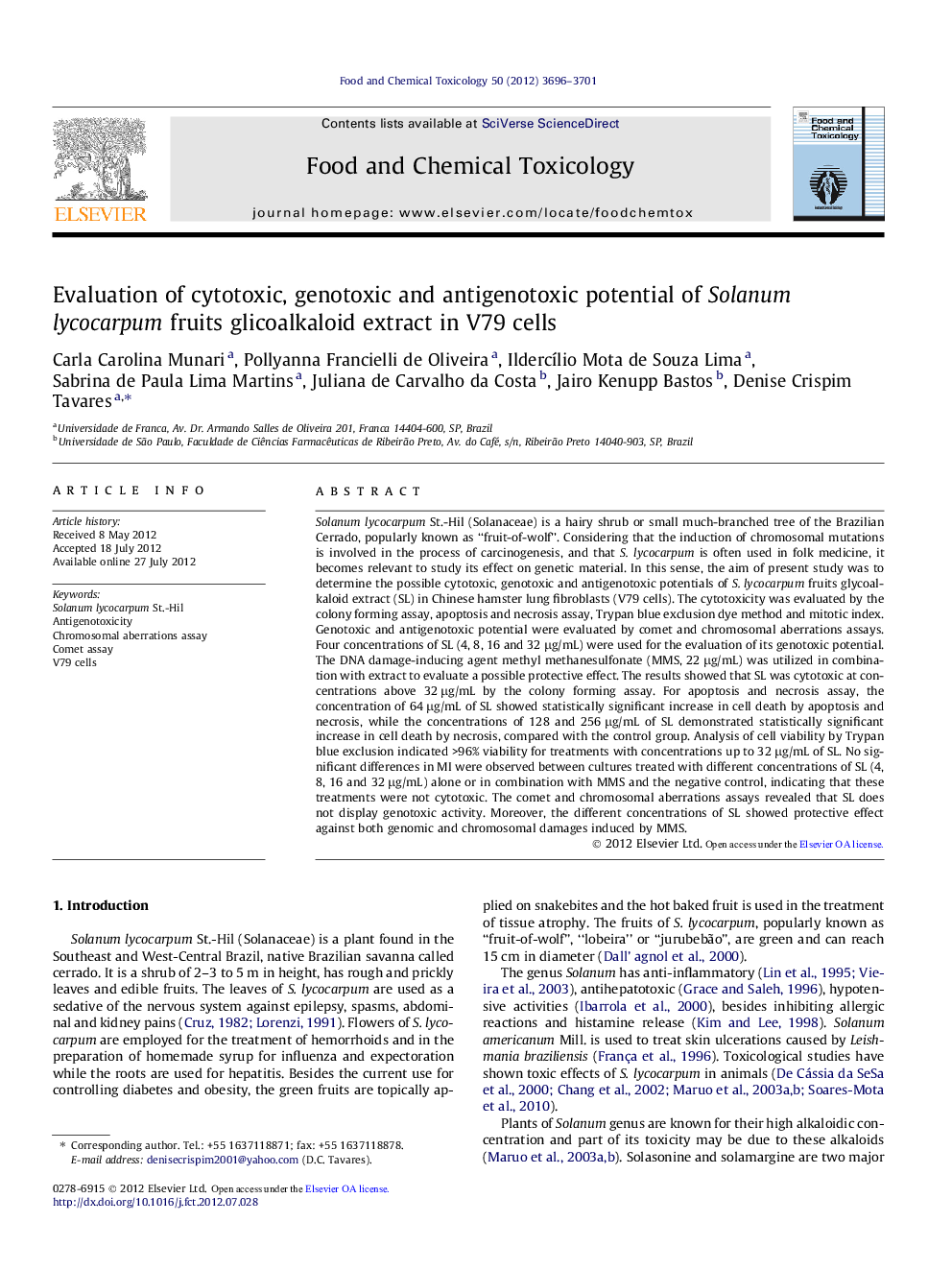| کد مقاله | کد نشریه | سال انتشار | مقاله انگلیسی | نسخه تمام متن |
|---|---|---|---|---|
| 5852737 | 1130852 | 2012 | 6 صفحه PDF | دانلود رایگان |

Solanum lycocarpum St.-Hil (Solanaceae) is a hairy shrub or small much-branched tree of the Brazilian Cerrado, popularly known as “fruit-of-wolf”. Considering that the induction of chromosomal mutations is involved in the process of carcinogenesis, and that S. lycocarpum is often used in folk medicine, it becomes relevant to study its effect on genetic material. In this sense, the aim of present study was to determine the possible cytotoxic, genotoxic and antigenotoxic potentials of S. lycocarpum fruits glycoalkaloid extract (SL) in Chinese hamster lung fibroblasts (V79 cells). The cytotoxicity was evaluated by the colony forming assay, apoptosis and necrosis assay, Trypan blue exclusion dye method and mitotic index. Genotoxic and antigenotoxic potential were evaluated by comet and chromosomal aberrations assays. Four concentrations of SL (4, 8, 16 and 32 μg/mL) were used for the evaluation of its genotoxic potential. The DNA damage-inducing agent methyl methanesulfonate (MMS, 22 μg/mL) was utilized in combination with extract to evaluate a possible protective effect. The results showed that SL was cytotoxic at concentrations above 32 μg/mL by the colony forming assay. For apoptosis and necrosis assay, the concentration of 64 μg/mL of SL showed statistically significant increase in cell death by apoptosis and necrosis, while the concentrations of 128 and 256 μg/mL of SL demonstrated statistically significant increase in cell death by necrosis, compared with the control group. Analysis of cell viability by Trypan blue exclusion indicated >96% viability for treatments with concentrations up to 32 μg/mL of SL. No significant differences in MI were observed between cultures treated with different concentrations of SL (4, 8, 16 and 32 μg/mL) alone or in combination with MMS and the negative control, indicating that these treatments were not cytotoxic. The comet and chromosomal aberrations assays revealed that SL does not display genotoxic activity. Moreover, the different concentrations of SL showed protective effect against both genomic and chromosomal damages induced by MMS.
⺠Solanum lycocarpum extract was cytotoxic at concentrations above 32 μg/mL. ⺠Solanum lycocarpum extract does not display genotoxic activity. ⺠S. lycocarpum extract showed protective effect.
Journal: Food and Chemical Toxicology - Volume 50, Issue 10, October 2012, Pages 3696-3701